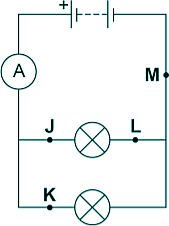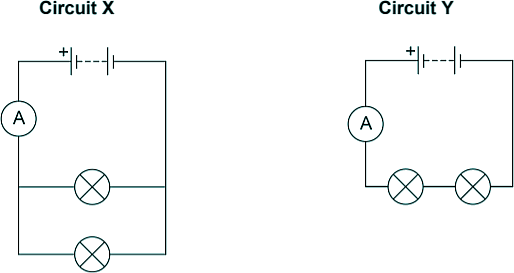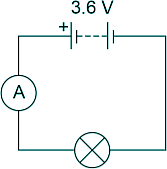GCSE Standard Questions: Electric Circuits Q6. Here is a circuit diagram:
(a) Give the letter indicating the position a switch could be placed in, so that both lamps can be switched on or off at the same time. M [1 mark] (b) Draw the circuit symbol for a switch.
[1 mark] (c) In 30 seconds, 24 coulombs of charge flow through the battery. Calculate the current in the battery. I = Q/t I = 24/30 I = 0.80 [3 marks] (d) There is a potential difference of 3.6 V across the battery. Calculate the energy transferred by the battery when 60 coulombs of charge flows through it. E = QV E = 60 x 3.6 E = 216 J E = 220
[3 marks] (e) Ragnar built Circuit X and Circuit Y shown in the circuit diagrams below. The components used in each circuit were identical.
[2 marks]
[2 marks] (f) Ragnar then built another circuit:
[1 mark]
[3 marks] (Total 16 marks) |
Follow me...
|









